While the country is beginning the first steps of emerging from quarantine––for now, at least––the summer season should still mean lots of reading time. Some selections in our latest roundup of books related to film and pop culture can be called escapist fare, while a few tread into darker realms. Let’s start with a trip to Arrakis––David Lynch’s Arrakis, not Denis Villeneuve’s.
Dune: The David Lynch Files Volume 2 by Kenneth George Godwin (BearManor Media)
Any opportunity to read a behind-the-scenes account of the making of a film by David Lynch is welcome. That is especially true when it comes to Dune, his adaptation of Frank Herbert’s sci-fi classic, which the filmmaker has repeatedly expressed his frustrations with. Lynch, of course, did not have final cut and has famously disowned the film, but it remains a strange, fascinating curio. For all of these reasons, the appearance of Kenneth George Godwin’s Dune: The David Lynch Files Volume 2 is major news. Godwin kept a diary on the set of Dune in Mexico, and, for the first time, has compiled that account with on-set photos and interview transcripts. Lynch fans are provided with a unique window into what went wrong, and why. An example, from day 90: “[T]he atmosphere on Dune has lost much of the friendly tone it once had. Rafaella [De Laurentiis] doesn’t know how to treat people decently. Everyone feels used and abused on the production.” The longer the shoot drags, the more difficult it becomes on everyone — especially Lynch. The director may not want to remember this notoriously upsetting production and post-production, but what a treat to have the chance to delve into its history.
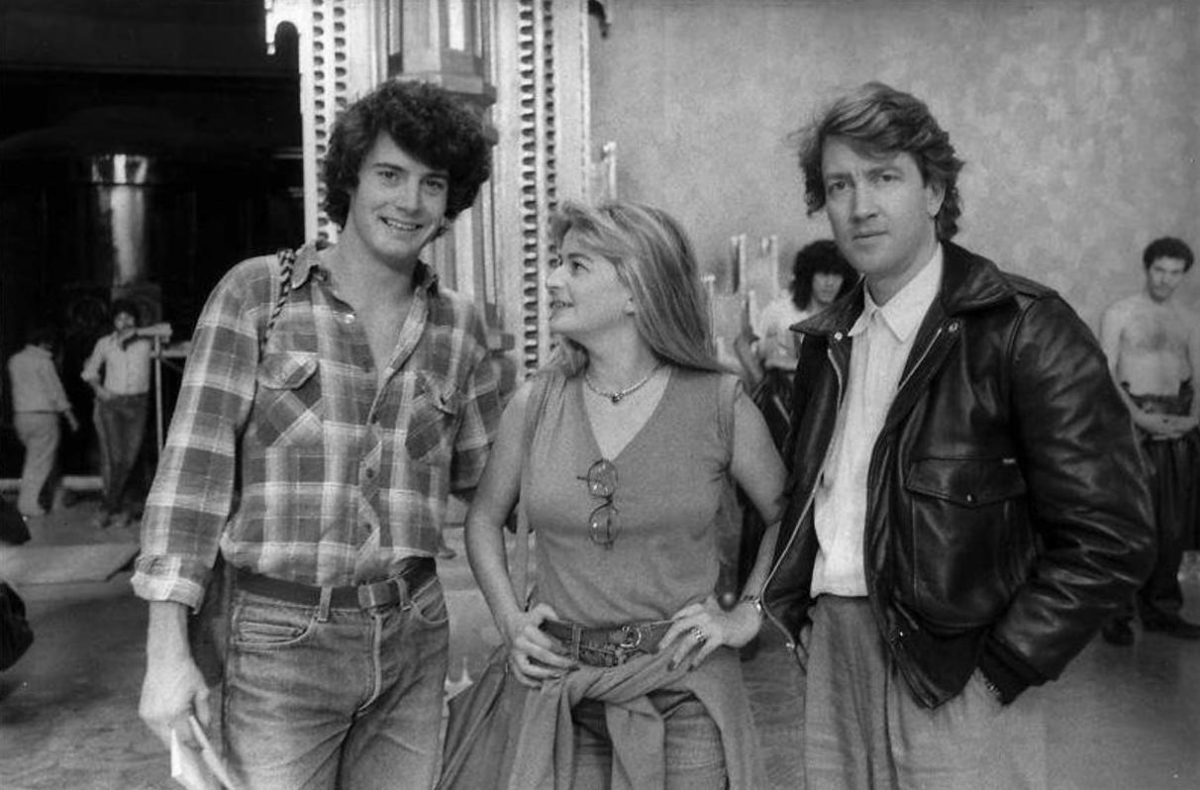
Portraits of Resistance: The Cinema of Céline Sciamma edited by Alex Heeney and Orla Smith (Seventh Row)
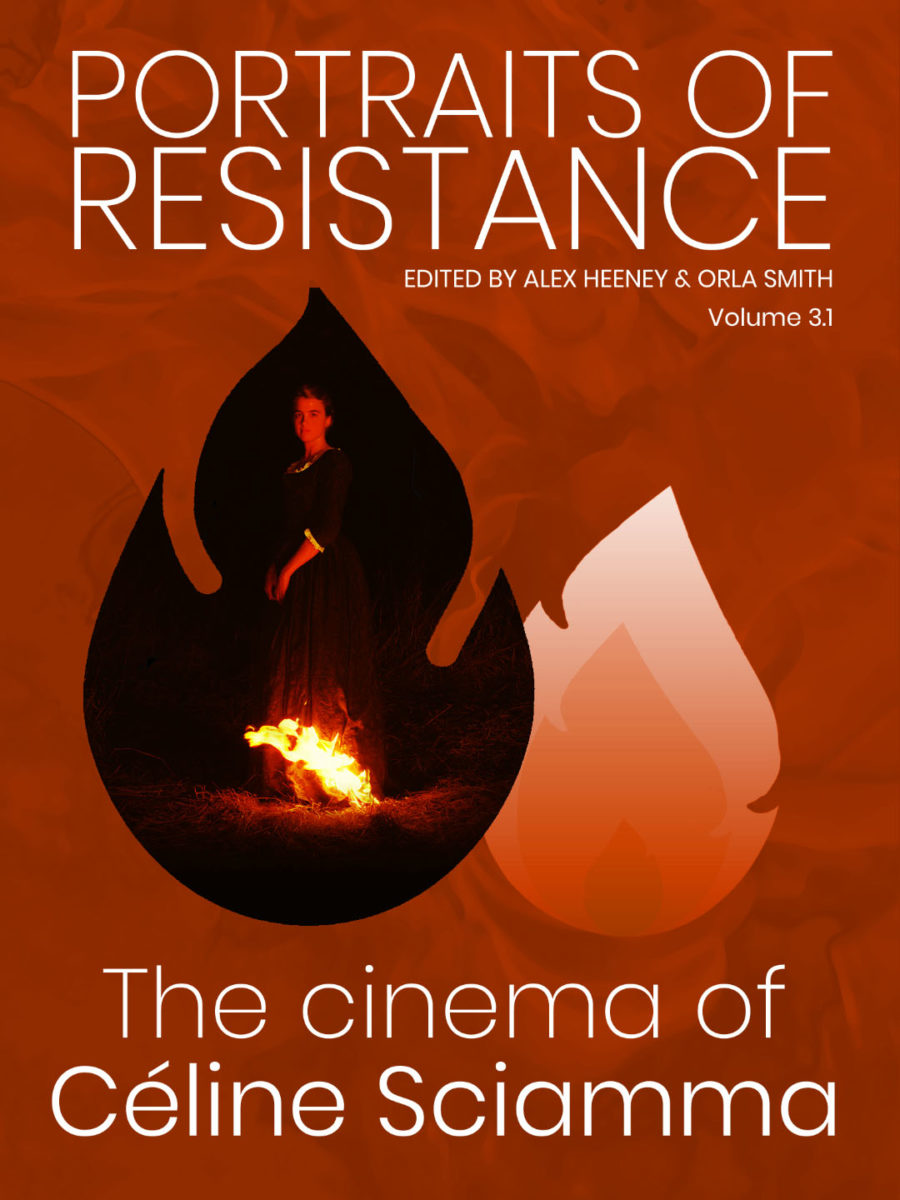
How long does it take for the latest ebook from Seventh Row, Portraits of Resistance: The Cinema of Céline Sciamma to capture the reader? One sentence––the first sentence of the foreword, in fact: “Back in 2015, Céline Sciamma changed the way our Seventh Row team looks at filmmaking.” Co-editor Orla Smith explains the impact Sciamma’s Girlhood had on her and fellow editor Alex Heeney, and outlines how the French filmmaker’s career culminated with the finest film of 2019, Portrait of a Lady on Fire. Portraits of Resistance delves into Sciamma’s entire career, including Water Lilies, Tomboy, Girlhood, and, finally, Portrait. As with the team’s acclaimed and insightful ebooks on Mike Leigh’s Peterloo and Joanna Hogg’s The Souvenir, the writing is colorful, the interviews insightful, and the analysis deft and memorable. Consider this section, highlighting the bonfire sequence in Lady on Fire: “Fire has figured throughout the film, giving warmth to a room in the manor, and also making us aware of the room’s emptiness and loneliness. But only outside, in nature, among other women, do we truly feel its power to reveal and to hide––the women glow, but almost in secret, away from the world of men.” This is beautiful writing, and we can expect even more from the next Seventh Row ebook, Roads to Nowhere: Kelly Reichardt’s Broken American Dreams. Visit reichardtbook.com for more info on the team’s look at the career of the First Cow filmmaker, and visit sciammabook.com to buy Portraits of Resistance.
Parasite: A Graphic Novel in Storyboards by Bong Joon Ho (Grand Central Publishing)
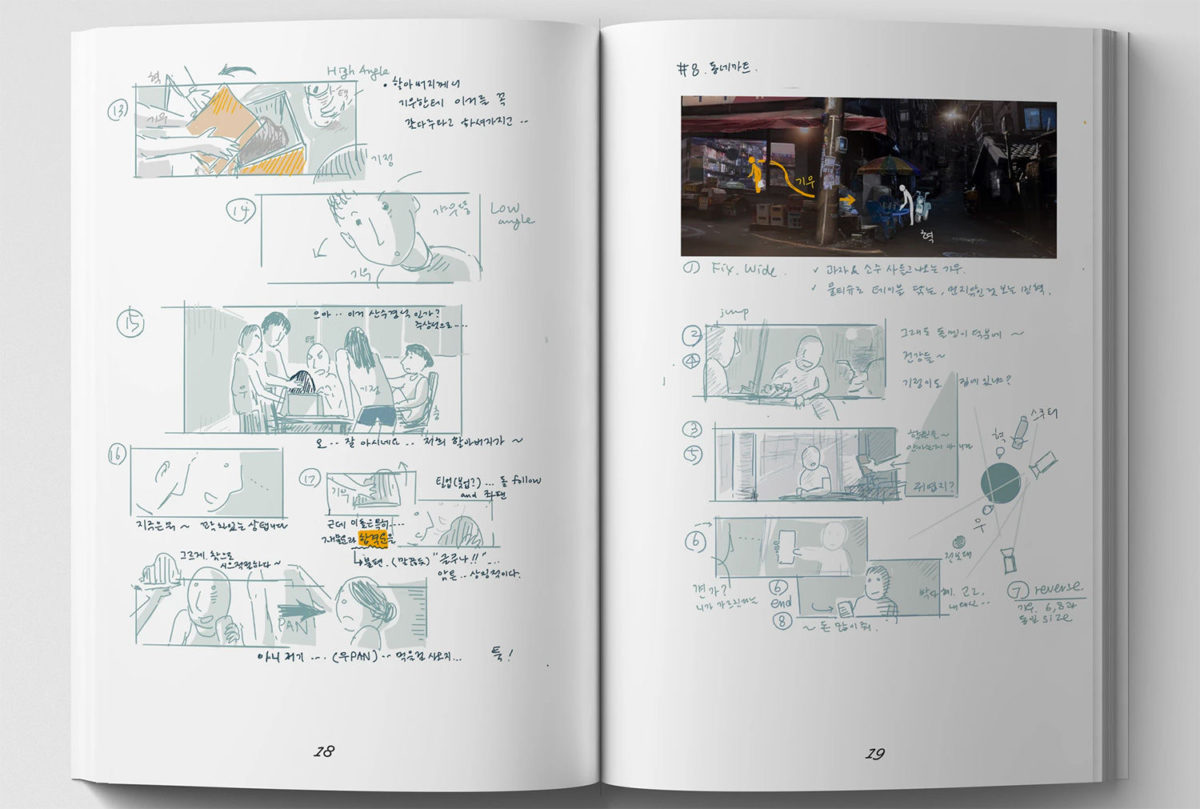
Here’s a legit shocker: Parasite took home the Oscar on February 9, 2020––a mere four months ago. It seems like four years, at least. Since then, while the world has been gripped by the COVID-19 pandemic and the fight against injustice, Parasite arrived on Hulu for home viewing and Parasite: A Graphic Novel in Storyboards has arrived for purchase. The book combines the script with Bong Joon Ho’s scene-by-scene storyboards for an experience that makes the film itself even more impressive. As the writer-director explains in his foreword, “Whenever I go to set without storyboards, I feel like I’m standing in the middle of Grand Central Terminal wearing only my underwear.” Paging through the book, it’s easy to see why. Breaking down his story of two families and a web of lies in this manner offers a glimpse into how he intricately planned his masterpiece––and why it impacted audiences so dramatically.
She Found it at the Movies: Women Writers on Sex, Desire and Cinema edited by Christina Newland (Red Press Ltd.)
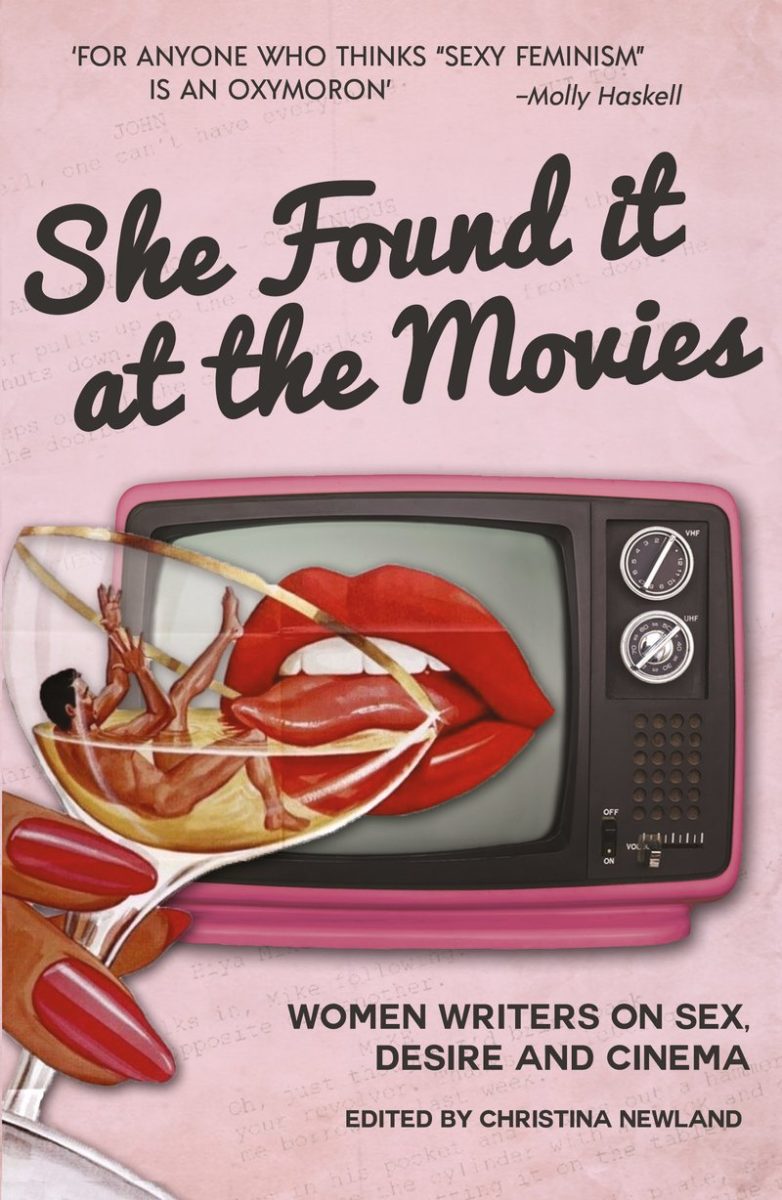
Christina Newland is one of the most insightful and consistently compelling voices on Twitter, and She Found it at the Movies feels like the book she was born to compile. This compendium of women writers exploring cinematic sex, fantasy, and desire is an absolute pleasure. There are some heavy-hitters here––Jessica Kiang, Sheila O’Malley, Pamela Hutchinson––and a gloriously vast collection of topics. “Put simply, women’s desires and sexual needs are marginalized in movies because they are in real life,” Newland writes in her intro. “Yet cinema offers us the chance to bring women’s roles as sexual beings, moviegoers and creators of cinema into sharper focus.” With chapters on everything from the appeal of Oliver Reed and Timothée Chalamet to High School Musical and Meg Ryan, She Found it at the Movies is an important and incisive text.
‘Broadsword Calling Danny Boy’: Watching Where Eagles Dare by Geoff Dyer (Vintage)
One of the most brilliant and creative film-related books of the last decade was Geoff Dyer’s Zona: A Book About a Film About a Journey to a Room. This case study of Tarkovsky’s Stalker is in many ways as provocative and involving as the film itself. It’s also intensely personal. So, too, is ‘Broadsword Calling Danny Boy’: Watching Where Eagles Dare. This time, the British author dissects the 1968 World War II-actioner Where Eagles Dare, starring Richard Burton and Clint Eastwood. “This little book is a narrative inventory of my own stock of details and observations,” Dyer writes, “amassed over many years and multiple––if often partial––viewings.” That’s a very 2020 way to experience film, and Where Eagles Dare is a delightfully offbeat choice of film to be experienced.
Phantom Lady: Hollywood Producer Joan Harrison, the Forgotten Woman Behind Hitchcock by Christina Lane (Chicago Review Press)
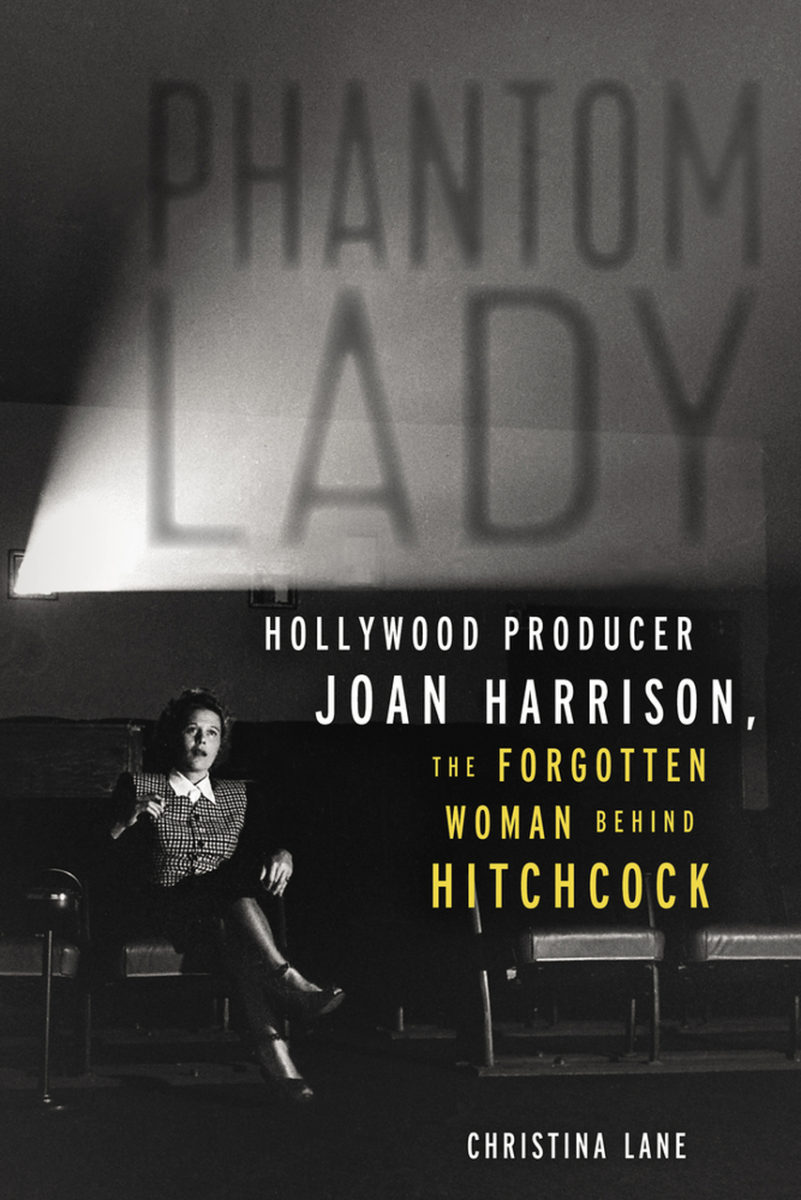
A biography that introduces audiences to an unjustly ignored or forgotten figure of history is always noteworthy. Phantom Lady certainly falls under that umbrella. This story of dynamic producer Joan Harrison is both a compelling read and a vital appreciation. Her work with Alfred Hitchcock is the focus of much of the book and is, as expected, remarkably entertaining. A particularly telling detail involves mogul David O. Selznick’s objections to making the title character of Rebecca “more assertive.” As author Christina Lane writes, “Joan would have to water down some of the heroine’s moxie. This went against her better instincts, but in acquiescing to the producer’s demands, she discovered her talents for added touches.” This ability to pivot shows how Harrison was ahead of her time––and vital to Hitchcock’s success.
Warhol by Blake Gopnik (Ecco)
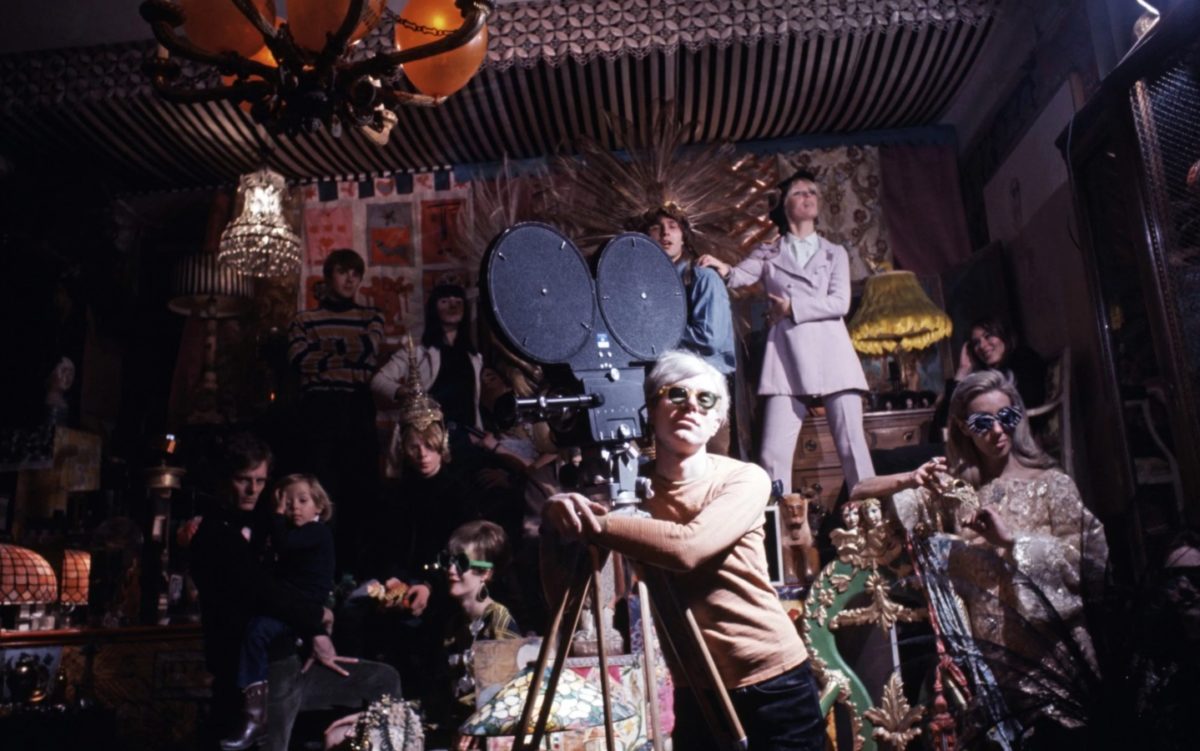
It seems likely that Blake Gopnik’s nearly-1,000 page study of the life and career of Andy Warhol is the definitive biography of the Pop Art icon. Warhol is the type of bio in which one can open to literally any page and be enraptured. Its subject comes off as rather sad, especially on a personal level; the quest for love was a lifelong disappointment for Warhol. But Gopnik’s book also leaves the reader with great reverence and even awe over the artist’s accomplishments. Moving from his youth in Pittsburgh to college days, the Factory era, his infamous shooting and recovery, the heyday of Studio 54, and finally, his death, Warhol feels like an expansive trip through American pop culture, art, and sexuality. By the time Gopnik writes his closing sentence––“Andy Warhol died, for the second and last time, on February 22, 1987, at 6:31 a.m.”––the reader is left both exhausted and exhilarated.
The Office: The Untold Story of the Greatest Sitcom of the 2000s by Andy Greene (Dutton)
The American version of The Office was perennially popular during its run on NBC. But it’s what happened after the final episode aired in 2013 that makes the series an extraordinary success story. As Office writer Brent Forrester explains in The Office: The Untold Story of the Greatest Sitcom of the 2000s, “My understanding is that eight of the top twelve shows on Netflix by viewership are seasons of The Office.” For this reason and due to its impact on popular comedy, the series certainly deserves the oral history treatment. Andy Greene’s book covers it all, from the creation of the BBC classic by Ricky Gervais and Stephen Merchant to casting Steve Carell, finding its legs, losing Carell, and embracing Robert California (boo). If you own a Schrute Farms sweatshirt, Untold History is a must-read.
Exploring The Rise of Skywalker
Will The Art of Star Wars: The Rise of Skywalker (Abrams) by Phil Szostak and the novelization Star Wars: The Rise of Skywalker (Del Rey) by Rae Carson swing any Rise haters? Hard to say, especially as a fan of the film. (What can I say? I got what I wanted out of it.) But Art, especially, may at the very least cause some admiration for the design that went into episode nine. Like author Phil Szostak’s explorations of The Force Awakens and The Last Jedi, his latest is a wondrous mix of concept art and behind-the-scenes tidbits. I especially enjoyed the Studio Ghibli-esque “Oracle” that did not make the final cut. The evolution of designs and characters is clear, and Szostak’s text is the closest we will come to a “making of.” Carson’s novelization is described as an “expanded edition,” and there are indeed a number of added scenes, especially at the book’s start. It also helps confirm some key details––the Emperor is referred to as having a “clone body,” while Lando speaks of the First Order turning “our kids into enemies,” specifically referring to his daughter. Also available is an audiobook for young readers, Star Wars: The Rise of Skywalker: A Junior Novel by Michael Kogge. It features deleted and extended scenes; actress/playwright Jessica Almasy narrates.
Quick hits: Three books and a Blu
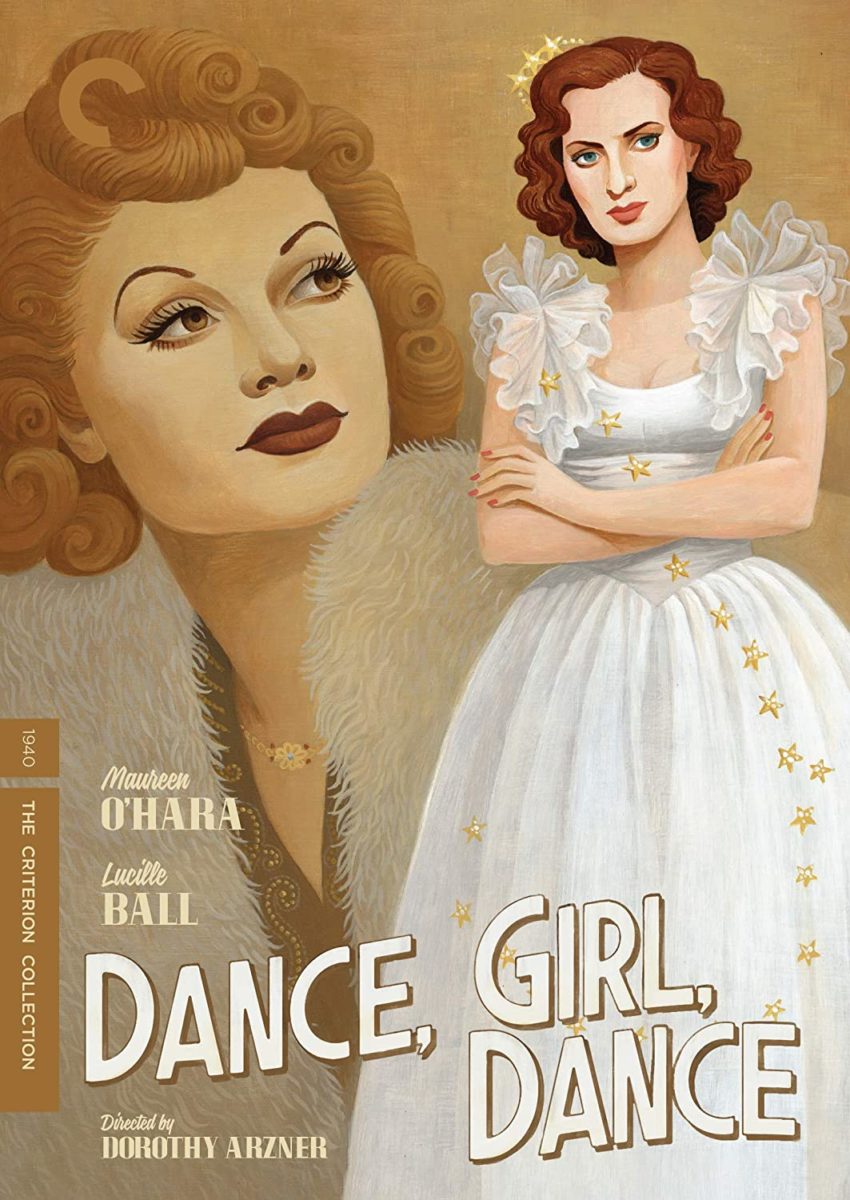
DK’s Black Widow: Secrets of a Super-spy by Melanie Scott was clearly designed to arrive in stores to tie in with the release of the Scarlett Johansson-starring Black Widow. Super-spy, however, works on its own. The colorful book hops through the character’s entire timeline in spirited fashion. Also recently released is another installment of Dungeons & Dragons Young Adventurer’s Guides (Penguin Random House). This time the focus is Wizards & Spells, and authors Jim Zub, Stacy King, and Andrew Wheeler once again have crafted a delightful intro for kiddos. While adult D&D fans might also find the book fun, Lego Ninjago Choose Your Own Ninja Mission (DK) is kids-only terrain. My son has already worn out his copy of this choose-your-own-adventure-style read featuring Lloyd, Master Wu, and the Ninjago gang. And finally, one of the latest must-owns from Criterion is Dance, Girl, Dance, a melodrama about two chorus girls––played by Maureen O’Hara and Lucille Ball (!). This gem is one of the 20 features directed by Dorothy Arzner, described as “the sole woman to work as a director in the Hollywood studio system of the 1930s and early ’40s.”
New novels:
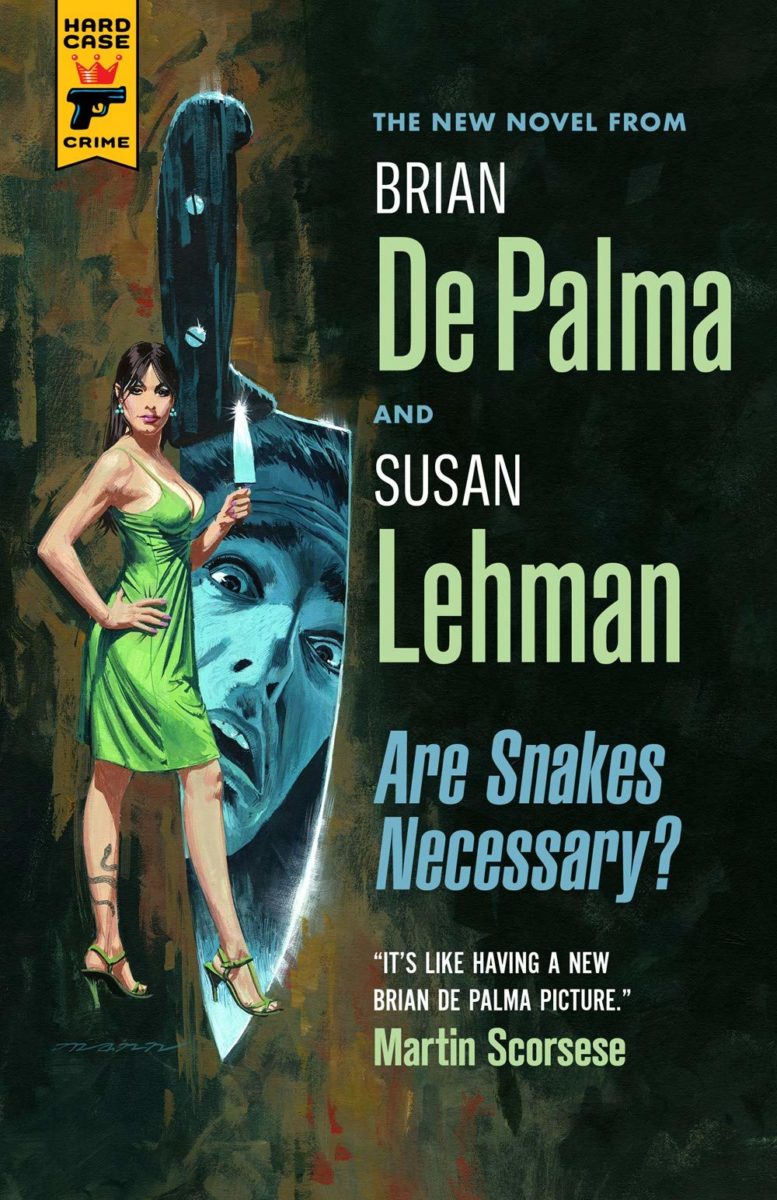
What would one expect from a novel co-written by Brian De Palma? Sex? Lies? Video? Are Snakes Necessary? (Hard Case Crime) checks all of those boxes, and lots of others that connect with the filmography of the director of Carrie, Blow Out, and Scarface. This tale of a philandering senator, a young female videographer, and a cold-hearted fixer is vivid, juicy, and silly. In other words, very De Palma. Co-written with Susan Lehman, it should tide over fans until the director’s next big-screen effort. Another novel worth checking out is The Discomfort of Evening (Graywolf Press) by Marieke Lucas Rijneveld. (It is translated from the Dutch by Michele Hutchison.) The gut-punch of a debut novel about a young Christian girl’s upbringing has a Haneke feel to it––in other words, hard to look at, but impossible to ignore.
